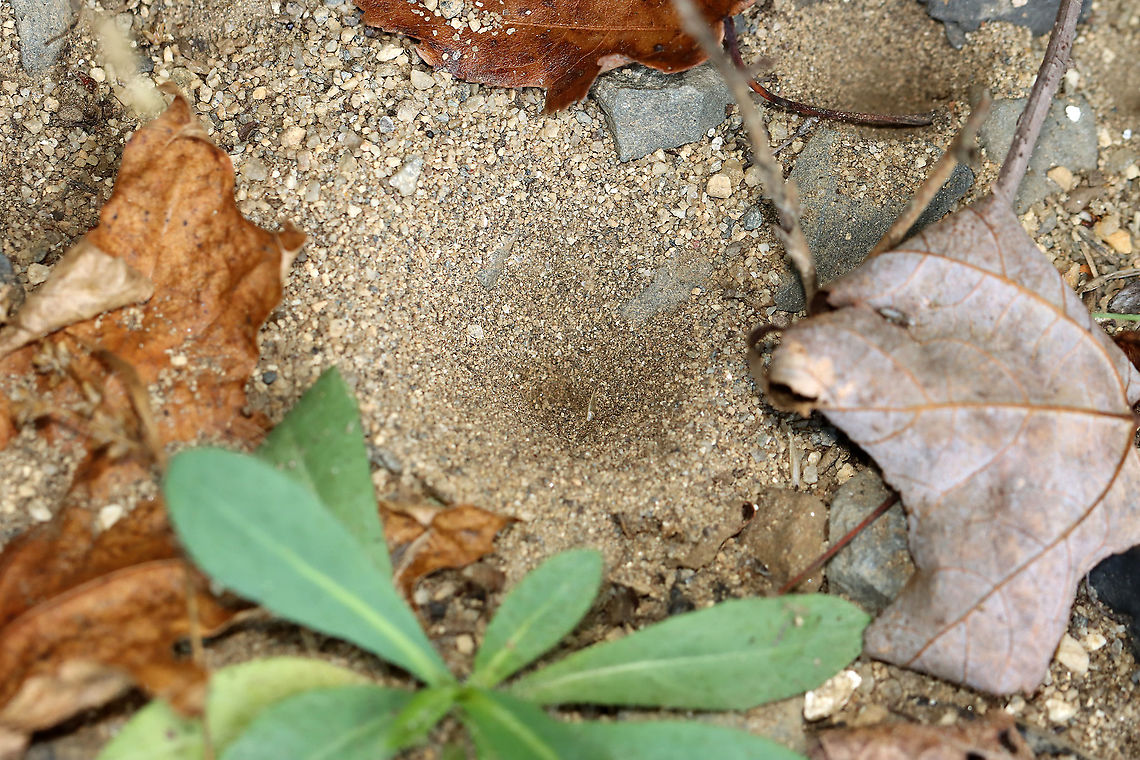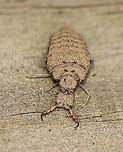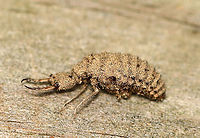
Antlion Pit - Myrmeleontidae
Antlion larvae can be found in sandy areas, where they dig a shallow cone-shaped pit. They wait at the bottom of the pit for an ant or other insect to fall in. They have robust bodies that are gray or brown in color. Their bodies are covered in bristles, which help them gain traction in their sandpits. They have enormous sickle-shaped mandibles, which have a canal that contains venom and enzymes. Interestingly, they do not have a traditional mouth. Instead, they have a small, fixed slit that can't be used for chewing solid food. So, they have to liquefy their meals. To eat, the larvae grab and stab their prey, inject it with venom and digestive enzymes. which dissolve soft tissues. Then, the larvae just have to suck the goo out of their prey. Their common name comes from the observation that they prey primarily on ants; So, metaphorically speaking, the antlion is a "lion" among ants.
Antlion larvae have an unusual feature in that they lack an anus. Any metabolic waste that they generate during their larval stage gets stored - some will be used to spin silk for the cocoon, and the rest will eventually be voided as meconium at the end of the pupal stage. Weird, but true.
Habitat: Sandy area under a birding platform; mixed forest




No species on this photo
It has been indicated that there is no species on this photo.
